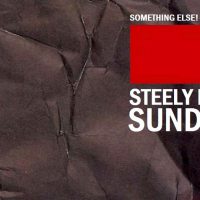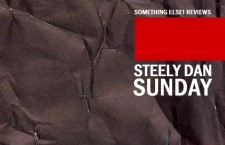*** STEELY DAN SUNDAY INDEX ***
Here is the second part of a three installment series chronicling harmonica extraordinaire Will Galison’s first hand experience working with Donald Fagen on a couple of tracks for what became Fagen’s next album, Sunken Condos. In case you missed it, Part One can be found here.
The Session
I don’t remember which tune we worked on first, probably “I’m Not The Same Without You.” I was given very little direction. Michael (Leonhart) ran the track and pointed out the places he wanted me to play, but encouraged me just to blow wherever else I felt I should. It’s common for a soloist to start recording before the actual solo, just to get into the feeling of the song. With overdubs, its better to overplay, as anything extraneous can be edited out, and sometimes that casual line you toss off while warming up is coolest thing you play all day.
I’ve done a whole lot of recordings, so I feel very at home when I’m behind a harmonica and in front of a nice mic and a pair of decent headphones. With tracks like Donald’s running, I felt like I was at the wheel of Ferrari at LeMans – which didn’t mean I wouldn’t careen into a crowded bleacher and burst into flames.
The main challenge for me when recording is to maintain a particular state of mind. I try to let the music envelope me like a river and to carry me where it wants; to feel like I am immersed in the groove, the attitude and the message of the piece. I can’t afford to think “this is a Donald Fagen record, so I’d better be funky” or “what is Donald thinking about my performance?”.
Playing solos on a “pop song” is different from playing a jazz solo. You don’t have chorus after chorus to explore permutations of a theme, or run slick-sounding lines and licks. You have to tell a story in 16 bars; beginning, middle and end. Ideally it should stand up as mini-composition, musically engaging in its own right and complimentary to the emotional arc of the song. It’s a bit like a Haiku or a calligraphic design; spontaneous and precise at the same time. You can’t make a good solo happen, you have to let it happen.
I would like to report that I aced the solos on my first take (but then I would have to kill Michael and Donald before they expose me as a liar, and that is out of the question). Let’s just say, I took a number of takes, and by “a number” I mean somewhere in the double digits.
In my recording career, it has happened on a few magic occasions that the first solo I take is “the one.” But that is rare indeed, and although that didn’t happen this time, I had the feeling that Donald was pleased with my concept and direction from the get go.
My initial takes were about finding a strong entrance to the solo, something that will make an immediate statement while leaving room for development and resolution in the remaining bars.
Once the opening is established, the next takes are often about trying to find a “shape” of the solo. Where does it peak? How does it resolve? Once the shape is established, subsequent takes are usually efforts to clean up any technical messiness.
Donald Fagen is a supremely clever and unconventional writer, which is why his music is so unique and appealing. But anyone who has played Steely Dan tunes knows that the unusual chord changes that sound absolutely natural in a Don Fagen song can be surprisingly difficult to improvise over. As a jazz player, I know jazz harmony pretty well, but I’m not an ace at spontaneously constructing a solo over changes that are unfamiliar (as some players can do). Rather, I prefer to try to internalize the sound of a harmonic progression, however complex, then forget the chords and then basically “play by ear” and feeling.
While 90% of pop and jazz songs are comprised of combinations of familiar chords sequences, Donald tends to throw some harmonic curveballs that are subtle but crucial to the construction of the song.
I often compare improvising over changes to skiing down a mountain (though I’m a better improviser than skier). Knowing the chord changes of a tune is like knowing a particular ski slope; where are the rocks, the lift poles, the icy patches, the trees, etc.
In both cases, you try to get from the beginning to the end in an elegant and interesting way, and familiarity with the terrain allows you more freedom and creativity. To extend the metaphor, improvising on a Fagen song can be a bit like skiing down a lovely intermediate slope with perfect snow conditions, but laced with the occasional land mine. “Ooh … look at me!…. KABOOM!!!”.
So it was on “I’m Not the Same.” I kept skiing over the same harmonic landmine, until Donald kindly and patiently took me to piano and said, “hey Will, you sound great… let me just show you this chord here…”
Improvising on the chromatic harmonica presents unique musical challenges. On the harmonica — more than most other instruments — the key you are playing in dictates the kind of lines and ideas you can execute. Unlike a guitar, where a line usually can be played with the same fingering in one key or another, the harmonica limits your choices pretty severely depending on the key. No matter how great your facility, there are trills, chords and legato lines that are easy in one key and impossible to play gracefully in others. Generally, experience leads me to choose ideas in real time that can be played in the key I’m in, but sometimes my musical instinct dictates that I play a line that the harmonica just won’t provide.
This is even more true for the diatonic harp than the chromatic, but with the diatonic harp you can choose from twelve different keys harmonicas, so as long as the key center is consistent, a number of familiar ideas present themselves. For other than a few diatonic players, such as Howard Levy, it’s not easy to be too innovative on the diatonic in this context.
Perfectionism
Whether I am playing on a Donald Fagen record or a demo for an unknown singer songwriter, I like to keep working until I get a solo that I am proud of. Many times the producer or artist has said “That was perfect! That was the one!” and I would say “are you kidding? That totally sucked; I can do better than that!”, which I suppose is an indirect way of telling the producer he doesn’t know good from bad.
I confess that in the case of “I’m Not the Same,” I never really felt like I aced it from beginning to end in any one take- perhaps I wasn’t squarely in the “zone” that day. So when Don said, “great, we have what we need”, I begged for “one more take.” Then I had to chuckle to myself. Here was Donald Fagen, one of the most meticulous, perfectionist musicians in history telling me that he was satisfied, and I was telling him in so many words; “no, man, that sucked, don’t you have any standards?”
Of course with multi-track recording, a soloist can do 20 takes, and the producer can “comp” the best bits into the final “performance.” But over the years I have left producers with several perfectly good takes, only to find that on the CD, they have cut and pasted my masterpieces into a hideous “Frankensolo,” with the head of a pig, the body of an anteater and the tail of wombat, so to speak.
In addition to the chromatic takes that made the cut, I also tried a few takes with the diatonic “blues harp.” Choosing the blues harp in the appropriate key allowed me to play some rhythmic chordal riffs that we all liked, but (in my hands at least) the diatonic lacked the refinement to play a solo with the melodic sophistication the songs called for.
After my “number” of takes of each tune, Donald, Michael and I sat in the control room and listened, remarking on the merits of each. I wasn’t involved in the ultimate edit, which happened later during the mix, but I’m very pleased with the solos as they appear on the album. Listening to the CD over a year later, I can’t begin to say which of the takes were used, or whether the solos were from one pass or “comped” out of several.
To be concluded …
[amazon_enhanced asin=”B004OOJPH2″ /] [amazon_enhanced asin=”B008O9V4C2″ /] [amazon_enhanced asin=”B00956VLU8″ /] [amazon_enhanced asin=”B0046DXPUO” /] [amazon_enhanced asin=”B009SSGED2″ /]
Galison’s latest album Line Open is also available from:
Waking Up Music
299 Riverside Drive, #1c
New York NY 10012
Send check or money order for $15.
- Steely Dan Sunday, Confessions of a Side Man: Recording on Donald Fagen’s Sunken Condos, Part 3 - November 25, 2012
- Steely Dan Sunday, Confessions of a Side Man: Recording on Donald Fagen’s Sunken Condos, Part 2 - November 18, 2012
- Steely Dan Sunday, Confessions of a Side Man: Recording on Donald Fagen’s Sunken Condos, Part 1 - November 11, 2012



